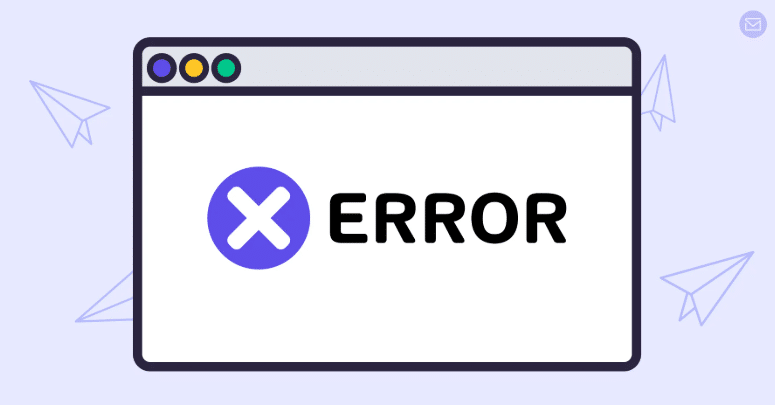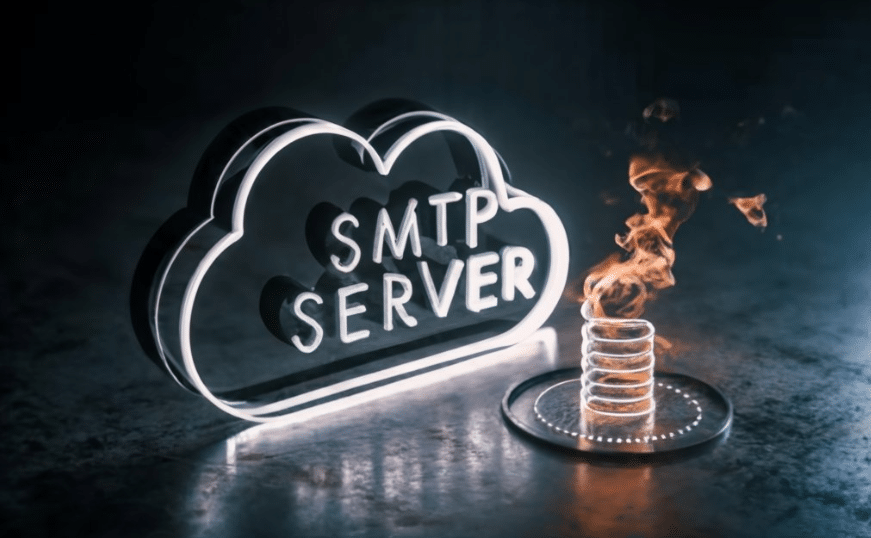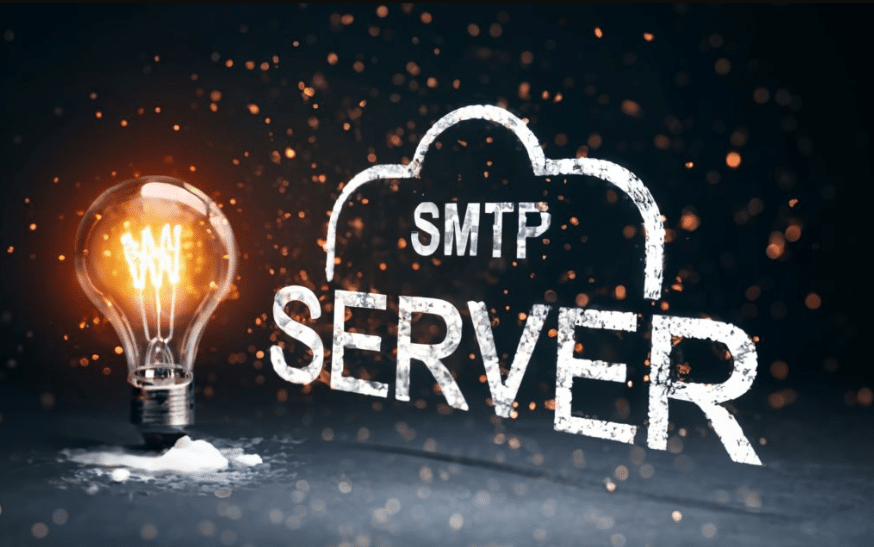Understanding SMTP Basics
The core protocol for email transport is known as Simple Mail Transfer Protocol. Through Simple Mail Transfer Protocol, users establish server connections to exchange email content across computer servers.
The SMTP procedure initiates with a client making a request to a server, followed by a dual address validation process. Once verified, the email message is transmitted through the server’s designated port.
The protocol employs a series of commands and responses to ensure the email is delivered accurately and efficiently. Key commands include HELO, MAIL FROM, RCPT TO, DATA, and QUIT, each serving a specific function in the communication process. The commands will assist in diagnosing transmission email glitches.
The proper functioning of email delivery depends on MX (Mail Exchange) records because they determine the destination server for each email. The appropriate setup of these records is essential for delivering emails without failure.
Knowledge of SMTP POP3 and IMAP differences leads to an improved understanding of email protocol systems. While SMTP is used for sending emails, POP3 and IMAP are protocols for retrieving and storing emails.
Properly managing server settings, such as choosing the correct port (typically port 25, 465, or 587) and ensuring that the server supports STARTTLS for secure transmission, can significantly improve email reliability.
Users who understand SMTP fundamental elements are able to solve mail delivery issues affecting their email applications. The foundation of these basic concepts enables users to evaluate both advanced problems and optimize email performance.

Common SMTP Configuration Errors
Misconfigurations can severely disrupt email delivery, often stemming from errors made during the initial setup. For example, inputting incorrect port numbers or server addresses can result in failed connections and undelivered messages.
Setting up DNS records plays a crucial role in configuration procedures. An exact configuration of DNS records that contains SPF, DKIM and DMARC stands as the essential control for email authentication and delivery performance improvement. Incorrect or incomplete records can cause emails to be marked as spam or rejected entirely.
Another frequent issue is neglecting to update server settings to match changes in your email provider’s configuration. For example, providers occasionally change the ports or authentication methods they support, and failing to update your server settings accordingly can lead to delivery issues.
Also, mismanaging MX records can direct emails to the wrong server, leading to delays or lost emails. Correctly configuring these records ensures that emails are routed to the appropriate destination.
Failure to enable SSL/TLS for secure email transmission can expose emails to interception and tampering. Enabling STARTTLS and choosing the correct port (usually 25, 465, or 587) ensures safe and reliable communication. Another common mistake is not monitoring and updating server software regularly. Outdated software can have vulnerabilities that compromise email security and reliability.
Lastly, incorrect throttling settings can cause emails to be sent too quickly, triggering anti-spam measures. Configuring rate limits appropriately based on your provider’s guidelines can help maintain a steady flow of outgoing emails.
Proper configuration of these elements is crucial to avoid common pitfalls and ensure your SMTP server operates efficiently.
Authentication Issues
Authentication is crucial in safeguarding your email server and ensuring only authorized users can send emails. Failed delivery of emails, together with multiple login attempt failures, occur when users input incorrect SMTP authentication credentials. Verification of both usernames and passwords proves to be a basic method of solving multiple authentication issues.
The most common authentication issue appears when server-based authentication methods differ from those selected by clients. SMTP supports several authentication methods, such as LOGIN, PLAIN, and CRAM-MD5.
Authentication processing requires equal configurations of method between client-based systems and server-based systems. Users need to stay informed about the development of the OAuth2 authentication system since their email providers could require this update in the future.
The security examination of the email server must verify its support for encryption protocols STARTTLS and SSL/TLS. These security protocols perform dual functions by encrypting email messages while validating the server’s identity to the email client system.
Occasionally, issues can arise from restrictions set by the email provider, such as IP address blocking or rate limiting, which can interfere with authentication. Ensuring that your IP address is allowed by the email provider can help mitigate these problems. The server logs contain vital information to help identify the source behind authentication system breakdowns.
The security of your email server will be strengthened by implementing multi-factor authentication (MFA). Implementing multiple verification factors through MFA restricts unauthorized access because it requires two or more user verification methods.
Regularly updating your authentication protocols and monitoring server logs can go a long way in maintaining a secure and efficient email server environment.

Handling Delivery Failures
Delivery failures can stem from various issues, and understanding SMTP error codes is crucial for pinpointing the cause. Standard error codes like 550 (mailbox unavailable) or 554 (transaction failed) can provide valuable clues. Analyzing bounce messages also explains why emails aren’t reaching their destinations.
One frequent cause of delivery failures is having your emails flagged as spam. To mitigate this, ensure proper configuration of SPF, DKIM, and DMARC records.
Utilizing these records enhances email authentication and delivery performance. Regularly cleaning your email list of inactive and invalid addresses will improve deliverability by decreasing bounce rates.
Tracking sender reputation maintains an important position among essential practices. Email providers often track your sending history to gauge your credibility.
High bounce rates, spam complaints, and large volumes of emails sent quickly can negatively impact your reputation. Maintaining a positive sender reputation involves adhering to best practices, such as avoiding spammy content and respecting rate limits set by your email provider.
Rate limits imposed by email providers can also result in delivery failures if exceeded. Distributing the email you send over time and using multiple IP addresses can help manage these limits effectively. Through your email list segmentation method you can run targeted marketing campaigns that help decrease rate limitation violations.
Incorrect setup of server ports, along with authentication methods, lead to delivery problems in email communication. Regularly updating and verifying these settings according to your email provider’s guidelines can prevent such issues. Server logs can also be invaluable for diagnosing problems, offering detailed information on why a particular email failed to deliver.
Managing Rate Limits
Email providers often enforce rate limits to maintain server performance and prevent abuse. These restrictions dictate how many emails can be sent within a specified timeframe, and exceeding these limits can result in temporary or permanent blocks on your email account.
To avoid these blocks, familiarize yourself with your provider’s rate limit policies. This knowledge allows you to structure your email campaigns within acceptable limits.
Spreading out email sends over time rather than sending large volumes at once can help you remain compliant. For instance, if your provider allows 1,000 emails per hour, consider sending 250 emails every 15 minutes to distribute the load evenly.
Using multiple IP addresses is another effective strategy. By rotating between several IPs, you can spread the email-sending load, reducing the likelihood of hitting any IP’s rate limit. This approach not only helps manage rate limits but can also improve your overall sender reputation.
Segmenting your email lists can also mitigate the risk of exceeding rate limits. Instead of sending a bulk email to your entire list, divide your recipients into smaller segments. The method enables better control over targeted emailing initiatives by increasing user engagement and decreasing rate limit violations.
The critical need for monitoring your sending metrics will help you avoid hitting limits. Constantly monitor bounce rates and delivery success rates as well as watch for any warning signals from your delivery provider about rate limit approaches. Your ability to adjust sending patterns early on will prevent sending issues through active metric management.
Your email automation system will assist with rate limit management. Tools that automatically queue and send emails according to your provider’s guidelines can ensure a steady flow of outgoing emails without manual intervention.

Security Concerns in SMTP
Security measures for SMTP must be established to protect the integrity of email transmission. Protecting email transmission requires encryption, which TLS (Transport Layer Security) effectively provides.
Strong access controls paired with regular server security updates create two lines of protection, which block unauthorized access and stop spam and phishing attacks. The security of servers improves with real-time monitoring of unusual patterns alongside using the most recent antivirus and antimalware software.
Malicious intruders can be blocked through firewalls alongside enabled IP allowlist controls. Your features gain better authentication functionality alongside secured email sender verification when you implement SPF DMARC and DKIM features. Multiple measures integrated together create an optimal defensive system that protects SMTP server security and email correspondence.

